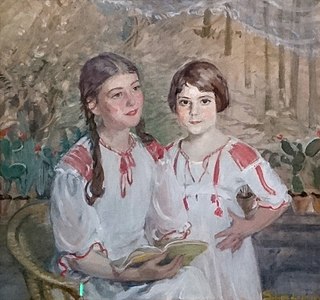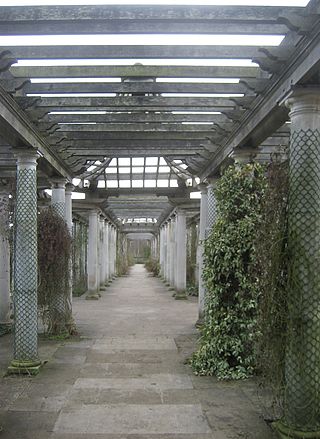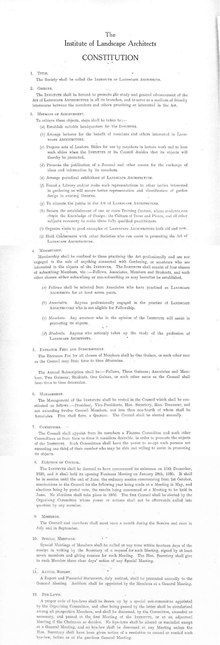
Landscape architecture is the design of outdoor areas, landmarks, and structures to achieve environmental, social-behavioural, or aesthetic outcomes. It involves the systematic design and general engineering of various structures for construction and human use, investigation of existing social, ecological, and soil conditions and processes in the landscape, and the design of other interventions that will produce desired outcomes.

Humphry Repton was the last great designer of the classic phase of the English landscape garden, often regarded as the successor to Capability Brown. His style is thought of as the precursor of the more intricate and eclectic styles of the 19th century. His first name is often incorrectly spelt "Humphrey".

A landscape architect is a person who is educated in the field of landscape architecture. The practice of landscape architecture includes: site analysis, site inventory, site planning, land planning, planting design, grading, storm water management, sustainable design, construction specification, and ensuring that all plans meet the current building codes and local and federal ordinances.

John Claudius Loudon was a Scottish botanist, garden designer and author. He was the first to use the term arboretum in writing to refer to a garden of plants, especially trees, collected for the purpose of scientific study. He was married to Jane Webb, a fellow horticulturalist, and author of science-fiction, fantasy, horror, and gothic stories.

John Fletcher Steele was an American landscape architect credited with designing and creating over 700 gardens from 1915 to the time of his death.

Charles Bridgeman (1690–1738) was an English garden designer who helped pioneer the naturalistic landscape style. Although he was a key figure in the transition of English garden design from the Anglo-Dutch formality of patterned parterres and avenues to a freer style that incorporated formal, structural and wilderness elements, Bridgeman's innovations in English landscape architecture have been somewhat eclipsed by the work of his more famous successors, William Kent and Lancelot "Capability" Brown.
William Andrews Nesfield (1793–1881) was an English soldier, landscape architect and artist. After a career in the military which saw him serve under the Duke of Wellington, he developed a second profession as a landscape architect, designing some of the foremost gardens of the mid-Victorian era. These included Witley Court in Worcestershire, Castle Howard in Yorkshire, Treberfydd in Powys and Kew Gardens. He also established a professional dynasty; with his sons Arthur Markham and William Eden Nesfield, he developed over 250 landscapes across the United Kingdom.

Cornelia Hahn Oberlander LL.D. was a German-born Canadian landscape architect. Her firm, Cornelia Hahn Oberlander Landscape Architects, was founded in 1953, when she moved to Vancouver.

Dame Sylvia Crowe, DBE was an English landscape architect and garden designer.

Sir Geoffrey Allan Jellicoe was an English architect, town planner, landscape architect, garden designer, landscape and garden historian, lecturer and author. His strongest interest was in landscape and garden design.

Montague Russell Page OBE was a British gardener, garden designer and landscape architect. He worked in the UK, western Europe and the United States of America.

The International Federation of Landscape Architects (IFLA) is an organisation which represents the landscape architectural profession globally. It aims to provide leadership and networks to support the development of the profession and its effective participation in the realization of attractive, equitable and sustainable environments. IFLA currently represents 80 member associations from Africa, the Americas, Asia Pacific, the Middle East and Europe. The Federation's mission is to create globally sustainable and balanced living environments for the benefit of humanity worldwide. IFLA APR

The discussion of the history of landscape architecture is a complex endeavor as it shares much of its history with that of landscape gardening and architecture, spanning the entirety of man's existence. However, it was not until relatively recent history that the term "landscape architecture" or even "landscape architect" came into common use.

Thomas Hayton Mawson, known as T. H. Mawson, was a British garden designer, landscape architect, and town planner.

A gardener is someone who practices gardening, either professionally or as a hobby.

Kongjian Yu, is a landscape architect and urbanist, writer and educator, commonly credited with the invention of Sponge City concept, and winner of the International Federation of Landscape Architects’ Sir Geoffrey Jellicoe Award in 2020. Received his Doctor of Design Degree from Harvard Graduate School of Design in 1995, Doctor Honoris Causa from Sapienza University of Rome in 2017 and Honorary Doctorate from Norwegian University of Life Sciences in 2019, Yu was elected to the American Academy of Arts and Sciences in 2016.

Lady Susan Jellicoe was an English plantswoman, photographer, writer, and editor who worked in collaboration with her husband, the landscape architect Sir Geoffrey Jellicoe. Her main interest was in landscape and garden design.
John Andrew Brookes, MBE was a garden and landscape designer. He started designing gardens and landscapes in the late 1950s and designed thousands of gardens. He also taught and lectured about horticulture, landscape and interior design.

Shute House, Donhead St Mary, Wiltshire, England is a former rectory, now a private home, notable for its gardens designed by Geoffrey Jellicoe. About 2+1⁄2 miles (4.0 km) east of Shaftesbury, the house and garden are at the very southern edge of Wiltshire, on the border with Dorset. The house is a Grade II listed building, while the gardens have a higher Grade II* listing on Historic England's Register of Historic Parks and Gardens. They have been described as Jellicoe's finest work. He worked at Shute House between 1969 and 1983 for the then owners, Michael and Anne Tree, returning to revitalise the garden for new owners in the mid-1990s, in what became his final work before his death in 1996.


























